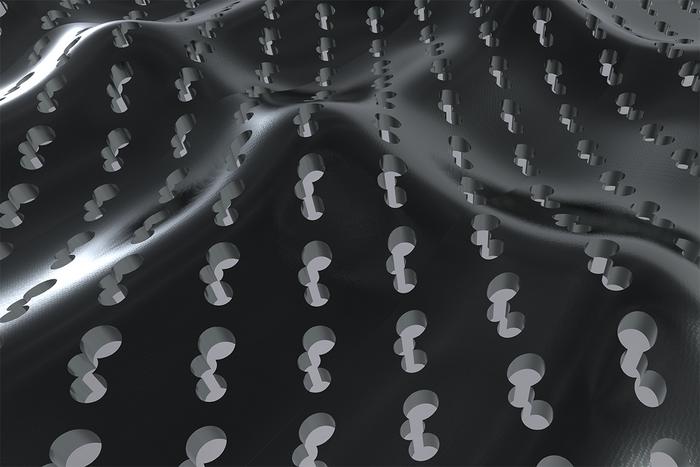| Jul 03, 2024 |
Designing photonic crystals with a genetic algorithm
(Nanowerk News) The advent of quantum computers promises to revolutionize computing by solving complex problems exponentially more rapidly than classical computers. However, today's quantum computers face challenges such as maintaining stability and transporting quantum information.
|
|
Phonons, which are quantized vibrations in periodic lattices, offer new ways to improve these systems by enhancing qubit interactions and providing more reliable information conversion. Phonons also facilitate better communication within quantum computers, allowing the interconnection of them in a network.
|
|
Nanophononic materials, which are artificial nanostructures with specific phononic properties, will be essential for next-generation quantum networking and communication devices. However, designing phononic crystals with desired vibration characteristics at the micro- and nanoscales remains challenging.
|
|
In a study recently published in the journal ACS Nano ("Tailoring Phonon Dispersion of Genetically Designed Nanophononic Metasurface"), researchers from the Institute of Industrial Science, The University of Tokyo experimentally proved a new genetic algorithm for the automatic inverse design—which outputs a structure based on desired properties—of phononic crystal nanostructures that allows the control of acoustic waves in the material.
|
|
“Recent advances in artificial intelligence and inverse design offer the possibility to search for irregular structures that show unique properties,” explains lead author of the study, Michele Diego.
|
 |
| Researchers at the Institute of Industrial Science, The University of Tokyo implement a genetic algorithm to automatically design phononic crystals with desired vibrational properties, which may help with future computer and communication devices. (Image: Institute of Industrial Science, The University of Tokyo)
|
|
Genetic algorithms use simulations to iteratively assess proposed solutions, with the best passing on their characteristics, or ‘genes,’ to the next generation. Sample devices designed and fabricated with this new method were tested with light scattering experiments to establish the effectiveness of this approach.
|
|
The team was able to measure the vibrations on a two-dimensional phononic ‘metacrystal,’ which had a periodic arrangement of smaller designed units. They showed that the device allowed vibrations along one axis, but not along a perpendicular direction, and it can thus be used for acoustic focusing or waveguides.
|
|
“By expanding the search for optimized structures with complex shapes beyond normal human intuition, it becomes possible to design devices with precise control of acoustic wave propagation properties quickly and automatically,” says senior author, Masahiro Nomura. This approach is expected to be applied to surface acoustic wave devices used in quantum computers, smartphones and other devices.
|

